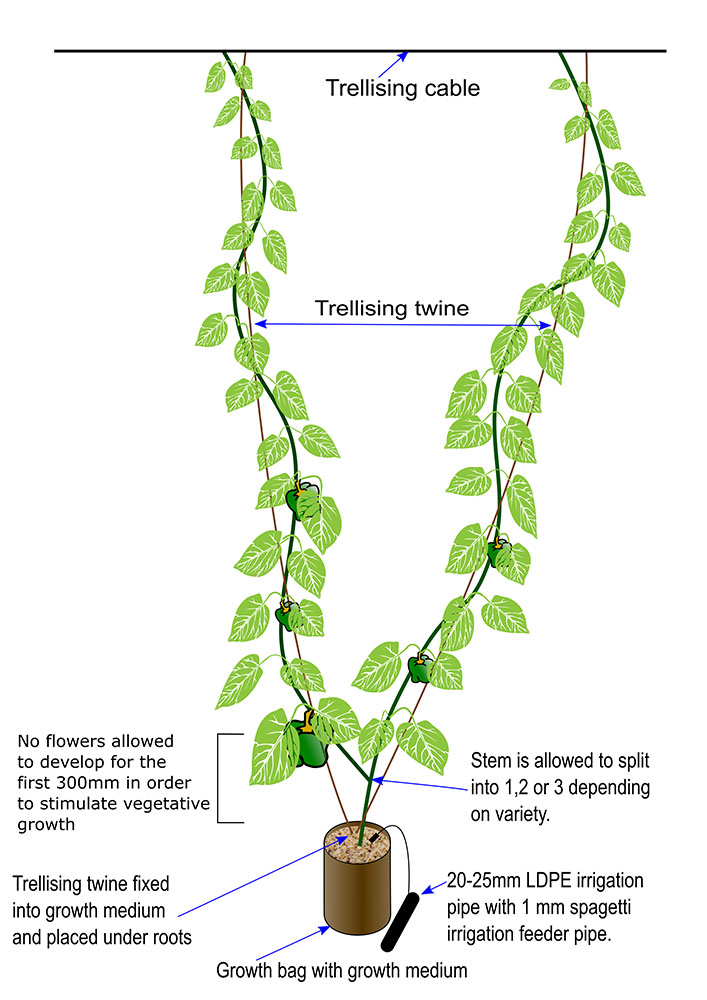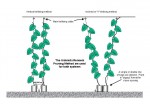Trellising hydroponically grown peppers – secret to growth optimization
Trellising sweet peppers is common practice in commercial greenhouses. Although labour intensive, it increases quality and quantity of fruit yields, so it cannot be ignored. You cannot grow a bush type pepper economically since these varieties do not produce the yield per square meter over the same growth period as trellised types.
Hydroponically grown peppers must be trellised. Most peppers that are grown in soil are allowed to form a bush. However, doing so in a hydroponic system will result in branch damage because of the accelerated growth. Although trellising is labour intensive and must be done weekly, the advantages are far greater than the disadvantages. Trellising plants have the following advantages:
- Increases yield per square meter
- Leaving fruit on alternate nodes increases plant vigour over the whole growing season, thus leaves larger higher quality fruit.
- Reduces the risk of disease development
- Allows for higher plant densities
- Easier picking
- Mature fruit are easy to spot
- More light reaches the older leaves and less die off.
Since peppers have a woody stem they tend to be brittle and break or collapse when carrying a commercial weight of fruit. Peppers are trellised straight up, unlike tomatoes that use the layering system. Initially, the plant has one stem growing upwards but later it branches into two stems. The plants are left to have two stems and all side shoots are removed. The early flowers are removed up to 300 mm which will allow rapid vegetative development. As soon as the plants reach the top of the wire (± 2.8 m high), the tip of the growth point is cut off so that no further vertical vegetative growth takes place.




